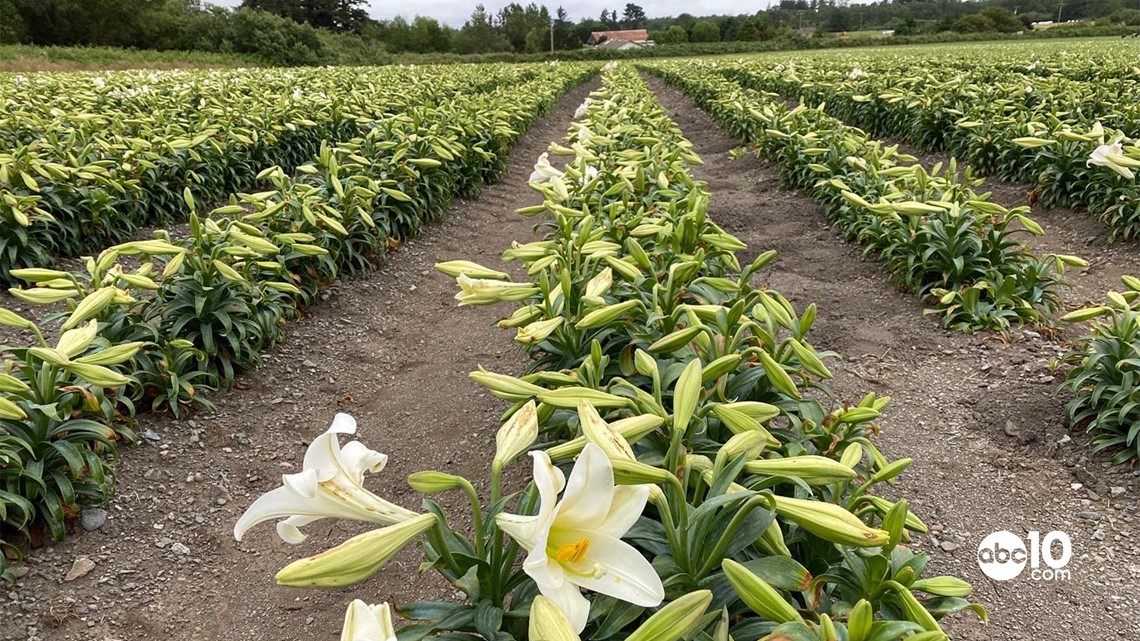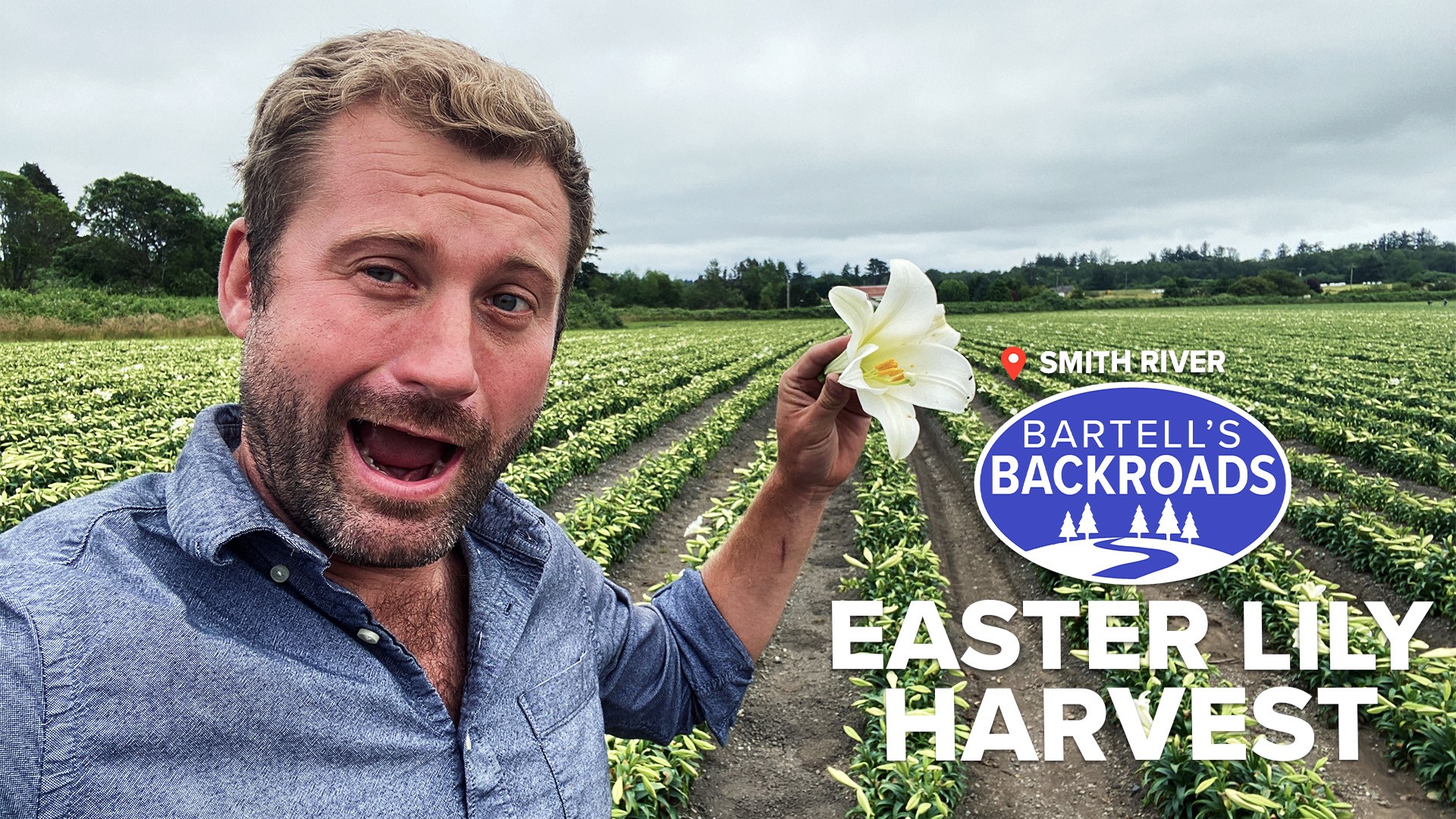SMITH RIVER, Calif. — The Easter lily: In the Bible this little white flower is mentioned many times. It symbolizes purity, hope, rebirth, and the resurrection of Jesus Christ.
It’s a delicate flower only sold in stores for about one week each year. When the Easter holiday passes, you will have a very hard time finding one unless you've grown it yourself.
If you've ever purchased or seen an Easter lily in North America, chances are it came from Smith River, the Easter Lily Capital of the World.
“There’s one farm in Oregon and three in California, so there is essentially four farms that are keeping this crop alive for Easter,” said lily farmer Matt Westbrook.
His family has sowed the soil in the northwestern corner of California for three generations now.
“Before WWII, Easter lilies came from Japan. After WWII, they needed a new place to grow them, so they brought them to the West Coast, and they grew the best right here in Smith River,” said Westbrook.
Easter lilies thrive in Smith River’s cool, foggy climate but to be ready for the Easter holiday, preparation of the lily bulbs begins in July when the flower first blooms.
TAKE A TRIP ON BARTELL'S BACKROADS:
► See an interactive map of everywhere John has visited on the backroads
► Watch all of the Backroads videos
► Follow John on Facebook
Farmers in Smith River are not in the flower selling business; they are in the bulb selling business because the whole flower would not survive being shipped around the world. It is Linda Crockett’s job to make sure the flowers in the field are removed so the bulb in the ground will be ready for Easter.
“It’s extremely labor intensive. It’s planted by hand, dis-budded by hand and packed by hand," said Crockett.
Flower removal is known as "disbudding," and it's done by skilled laborers who lie belly-down on a homemade vehicle called a field creeper, which suspends workers in the air while they reach down and disbud the flowers below them.
“As quickly as possible, we want to get the flower off so the sugars go into the bulb because we are after the bulb,” said Crockett.
The flower petals are left on the ground to decompose and fertilize next year’s crop. Many of the staff have worked these lily fields for over a decade.


It takes on average three years of planting, growing and disbudding before a bulb is ready to be sold. The bulb gets bigger each year in the ground and if it survives stormy weather and disease, the bulb will be harvested in November.
“It's not like growing corn. When you are done growing corn, you ship it to the store. We have ongoing responsibilities throughout production,” said Del Norte County Farm Bureau president Rob Miller.
The responsibilities he's talking about are the delicate process of getting the bulbs out of the ground and shipped to greenhouses around the world so they can be grown locally for Easter.
“My favorite part about the lily is the day after Easter because shipping is a little time consuming and stressful,” said Miller.
If the harvested bulb is not washed, packed and kept at the right temperature, it will not make it to the greenhouses growing them for Easter. Because the Easter lily business is such a niche market, Spencer Westbrook uses modified farm equipment in the packing house to make sure the newly harvested bulbs are sorted by size and shipped to greenhouse growers.
“There are guys in Oxnard, there was a truck from Virginia yesterday, people from all over the world,” said Westbrook.
It takes about 90 to 120 days to grow Easter lilies in a greenhouse. After that, nurseries will deliver them to nearby stores or churches. It’s a long journey for these flowers but unfortunately demand for the Easter lily is not what it used to be.
“There is less religious ties today with millennials than there was 40 or 50 years ago, because there is less ties with church, and therefore the consumption of lilies is not going up with the increase of population,” said Miller.
Just four farms and a small group of workers produce a majority of the world's Easter lilies. It’s a tough, labor-intensive crop. Regardless of fluctuating demand for the flower, growing them is a labor of love for the people of Smith River.
Linda Crockett summed it up, “From the 70s, it was like 80 or 90 [Easter lily farmers], so I'm very passionate about this crop. That’s why I’ve stayed with it.”
TAKE ANOTHER WHIFF OF THE BACKROADS: California's only rose oil producer is in Healdsburg. Its owners take ABC10's John Bartell on a tour from bloom to perfume.



















